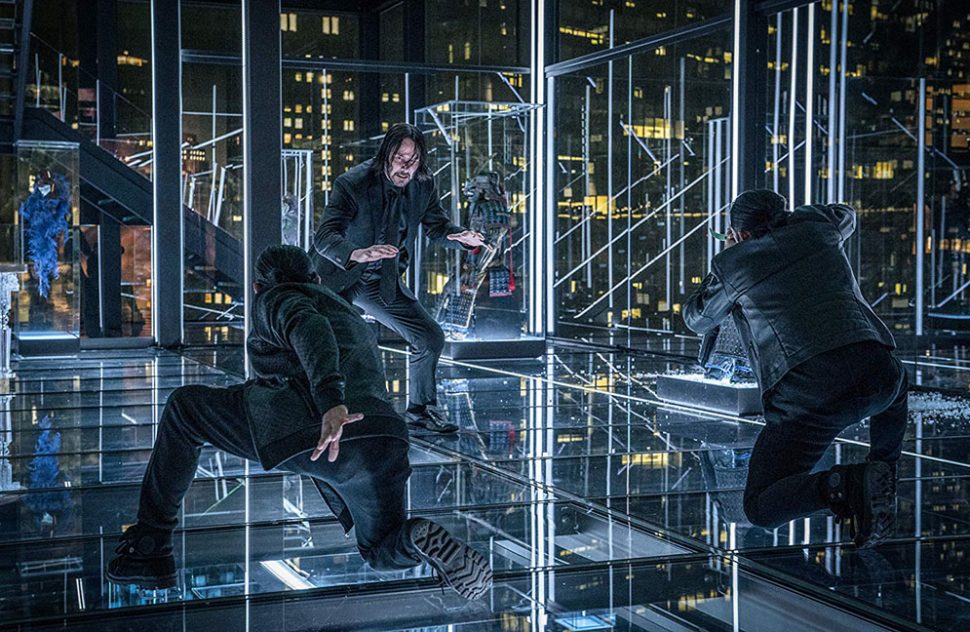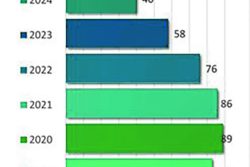![]() In recent weeks, the newest Disney remake “Aladdin” and the third instalment of the “John Wick” action franchise have been dominating the sales at local cinemas. Both have successively been at the top of the international box office in the same period and as the summer movie season beckons, both offer enough razzle dazzle onscreen while grounding their thrills in the familiar. It creates a stark sense of diminishing returns in both cases even when they reach their surest heights.
In recent weeks, the newest Disney remake “Aladdin” and the third instalment of the “John Wick” action franchise have been dominating the sales at local cinemas. Both have successively been at the top of the international box office in the same period and as the summer movie season beckons, both offer enough razzle dazzle onscreen while grounding their thrills in the familiar. It creates a stark sense of diminishing returns in both cases even when they reach their surest heights.
“John Wick: Chapter 3 – Parabellum” picks up immediately where the previous film ended. Former assassin Wick is now a marked man and on the run after an unsanctioned killing in the previous film. What follows is a series of stylised, highly choreographed fights as Wick tries to outrun the bounty placed on him. “Parabellum”, like its predecessors, is heavy on the aestheticism and in its surest moments director Chad Stahelski is in firm visual control of the film, but the more it goes on the less effective the thrills seem. It’s intriguing to note as the series has ballooned in popularity, so has the running time. This is the longest entry yet, and it feels that way.
Critical assessment of the “Wick” films feels counterintuitive when their very nature privileges the emotional over the cerebral. The series is also not alone in being one that may have been better by ending as a standalone film. So, the issues with “Parabellum” seem boring for how familiar they are. Four credited writers and yet the film seems to have little grip on its story, with a large portion of the middle seemingly moving in place until something significant happens. “Parabellum” seems intent on excavating the mythology that has held the series up, but the series is less effective when examining myths and stories and so every glimpse into the machinations of the fearsome high table of the series’ lore feels more leaden and tedious than exciting and provocative.
The “Parabellum” of the title is a nifty pun. It’s the name of a kind of semi-automatic weapon. More interestingly, it’s Latin for prepare for war. This comes to haunt the film, though. “Parabellum” is primarily preparatory and it’s hard not to notice this as the scant narrative elements are stretched to their limit to sustain 130 minutes of film. It becomes a cause for concern as the thrilling swirls of violence on screen lose their potency the longer they’re stretched and so the final showdown feels more perfunctory than anticipated. But there’s something in expected thrills, if the cheers of the audience (alarmingly, many of them children with their parents) is anything to go by when Wick brings out the bigger guns at the film’s climax.
It’s the expected thrills, after all, that have precipitated Disney’s revolving wheels of live-action adaptations of their older animated films. We received “Dumbo” earlier this year. “The Lion King” is set to come later on, and at the moment we have “Aladdin.” Director Guy Ritchie’s take on “Aladdin” is not as slavishly deferential to the source as Disney’s live-action “Beauty and the Beast” was, but the film takes pleasure in invoking the original film. And it was that expectant thrill that was palpable in the audience I saw it with.
In the middle of the film, a few seconds before our hero takes Princess Jasmine on that magic carpet ride, a woman behind me, so anxious for the moment, seemed unable to stop from shouting out, “It’s a whole new world.” And it was A whole new world. The song at least. In reality, “Aladdin” is hardly new. This is tried and tested material, and although I will admit trepidation that Guy Ritchie as director for this film seemed like a weird case of Hollywood mad-libs, “Aladdin” is not… bad. Rather than damn with faint praise, I’ll give it this – “Aladdin” is definitely more earnestly pleasant and good-natured than the film’s ad-campaign would have you believe.
The tale is the same – plucky street-urchin is swooped up by Jafar, the Sultan’s second-in-command, to retrieve a magic lamp from a foreboding cave. He attains the lamp and three wishes for himself. Now if only he can get the Sultan’s daughter to fall in love with him while outmanoeuvring the vengeful Jafar. A live-action “Aladdin” was always going to be unavoidably anachronistic. It’s a tale set hundreds of years ago somewhere in the Middle-East but the music from its (excellent) soundtrack is redolent of early nineties pop. The unwieldly nature of the pairing seems less significant when done in animation. When matched with real people, and semi-realistic production design, it all seems kind of ridiculous. And, “Aladdin” is very often ridiculous. Deliberately so.
This is not Ritchie’s heights as a director but he harnesses his typical interest in everyman characters out of their depths to make “Aladdin” in the vein of a buddy-comedy between Aladdin and his genie. It’s a diverting choice, and the film is consistently more compelling when it gives way to the silly humour than when it aims for real emotion. It helps that the cast is so game. Egyptian actor Mena Massoud is the right amount of naïve sweetness as the constantly grinning Aladdin and Naomi Scott’s Jasmine, who seems to be existing in the wrong period, makes her contemporary inflection make sense in a film that seems ready to announce its solidarity with women.
As a piece of entertainment, “Aladdin” wins for its earnestness but it’s an odd thing to note the strangest deficiencies in its technical renderings. My own churlishness prevents me from thinking of these Disney reimaginations as little more than commodities put together on a kind of Disney-fied conveyor belt. And, although, “Aladdin” attempts its own zany weirdness it is betrayed by some moments of ugly photography and editing, which I’m never sure is a subversive aesthetic style or proof of the film’s rushed post-production. The film’s adage, especially in its final act, seems to be bigger, more, better and in this case, it does not seem to fit. And, so even its brighter moments are mitigated by the awareness of its genesis. Its animated predecessor exists with more surety and panache.
Like “Parabellum,” “Aladdin” feels longer than its running time but like that film the length seems negligible. Both films are offering exactly what they’re selling to audience. One is an aesthetic dance of violence with familiar and unfamiliar weapons. The other is an irreverent romp of pluck and bravery overcoming everything. They’re both incredibly familiar and less risky than I’d like. But audiences seem satisfied with the familiarity of these thrills.
“John Wick: Chapter 3 – Parabellum” and “Aladdin” are now playing at local theatres.








